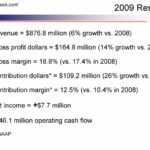
Bank reconciliation plays a crucial role in the internal control process of a company and helps in detecting fraud and error in the process. When preparing a bank reconciliation, the company must look for two types of differences, timing and unrecorded differences. The company found there are marketable securities $3,000 deposits in transit and $2,000 outstanding checks.
Simplifies Tax Filing and Financial Reporting
If a company has more than one bank account in the same or different banks, it will receive multiple bank statements for each account. Similarly, it is a good practice for companies to maintain a separate bank book for each corresponding bank account. A bank reconciliation statement is prepared by a depositor (account holder) to overcome differences in the balances of the cash book and bank statement. Interest is automatically deposited into a bank account after a certain period of time. So the company’s accountant prepares an entry increasing the cash currently equity definition shown in the financial records.

Step 1: Match Each Item on the Bank Statement to the Cash Account
As a result, the bank statement balance will be lower than the cash book balance, so the difference will need to be adjusted in your cash book before preparing the bank reconciliation statement. A bank reconciliation statement is important in managing your company’s finances. This document can help ensure that your bank account has a sufficient balance to cover company expenses. It’s a tool for understanding your company’s cash flow and managing accounts payable and receivable. If you haven’t been using bank reconciliation statements, now is the best time to start.
- Common sources include deposits in transit that have not yet been deposited in your bank account, as well as bank fees that have been withdrawn by your bank but may have been missed in your company records.
- Hence, at the end of each month, the first thing to do is to consult the bank reconciliation statement prepared at the end of the previous month.
- A bank reconciliation is used to detect any errors, catch discrepancies between the two, and provide an accurate picture of the company’s cash position that accounts for funds in transit.
- Discrepancies between the balance sheet and the bank statement must be identified and resolved promptly.
- For example, your bank statement shows that your ending balance is $11,450, while your G/L balance according to your trial balance is $10,850.
If the company properly identifies what are t accounts definition and example all differences and adjusts them, there should be no remaining difference between the bank book and bank statement balances. If there are still some differences, these may be due to errors in either the two balances or the bank reconciliation process. The company may need to repeat the process until the balance becomes zero, or it identifies any errors. The next step in the bank reconciliation process is to adjust unrecorded differences.
Deposits in Transit
One of the most common causes of discrepancies in bank reconciliations is delays in deposit and transaction processing. Checks sent or received at the end of the day, or toward the end of the month, may be subject to delay which will prevent them from being included on the bank statement. Accounting for these delays is key to reconciling the total amounts on the company’s financial statement and the bank statement.
These are categories of discrepancies that cause a difference in the balances between the balances in the bank book and bank statement. The main purpose of bank reconciliation is that it plays a vital role in the internal controls of a company. Without bank reconciliation, the bank book balance and bank statement balance of the company will never match. Similarly, without bank reconciliation, the company cannot identify any expenses that the bank may have charged to the bank account. Therefore, the expenses of the company will be misstated and go against the prudence concept of accounting.
When preparing a bank reconciliation statement, a journal entry is prepared to account for fees deducted. Incorrectly recording transactions in the accounting system can result in errors in the balance sheet and bank statement, making it challenging to reconcile. Greg adds the $11,500 of deposits in transit to his bank statement balance, bringing him to $99,500.
After adjustments are made, the book balance should equal the ending balance of the bank account. After reviewing all deposits and withdrawals, adjusting the cash balance and accounting for interest and fees, your ledger’s ending balance should match the bank statement balance. If the two balances differ, you’ll need to look through everything to find any discrepancies. The next step in preparing a bank reconciliation statement is to identify the reason for the differences.
